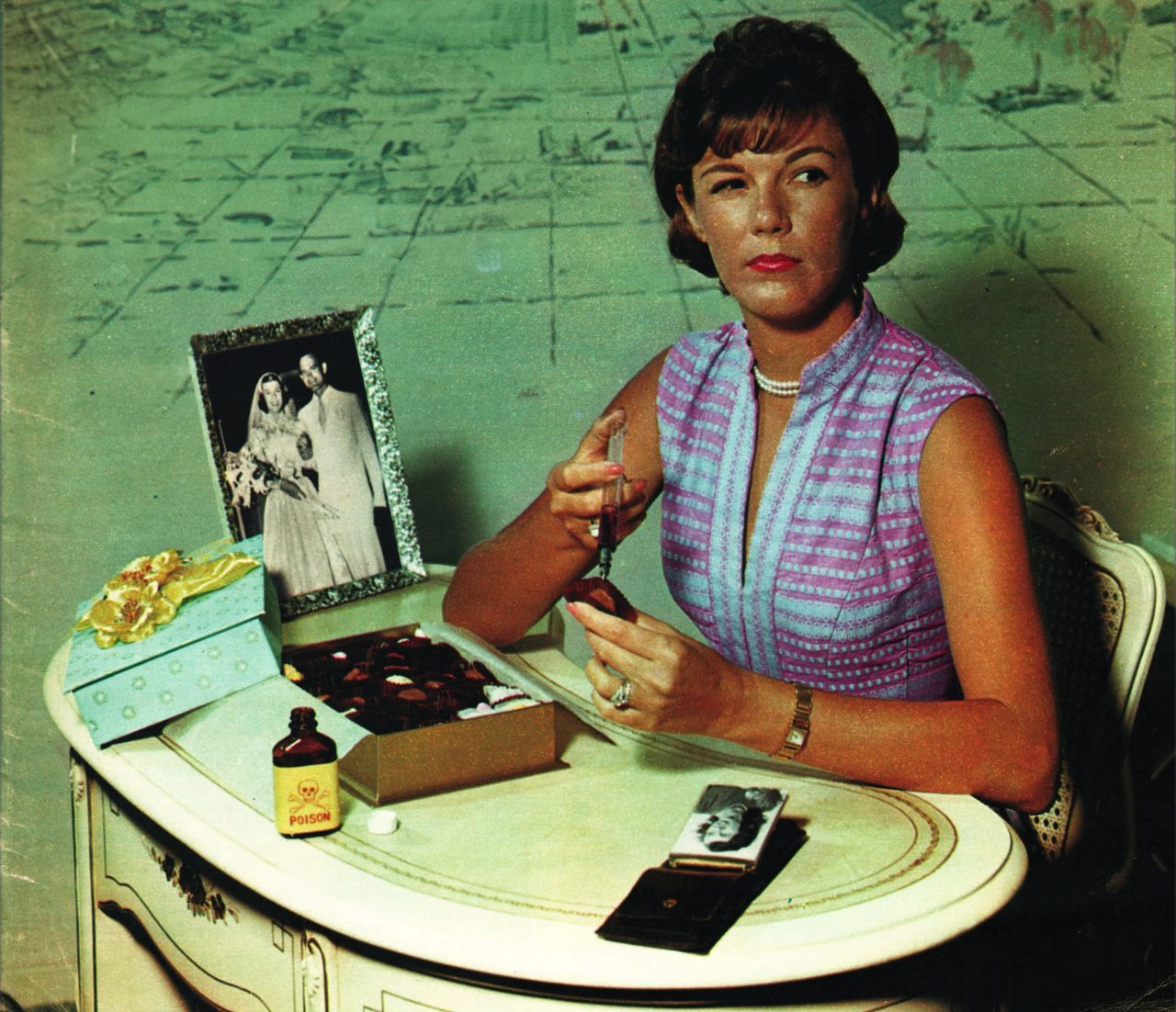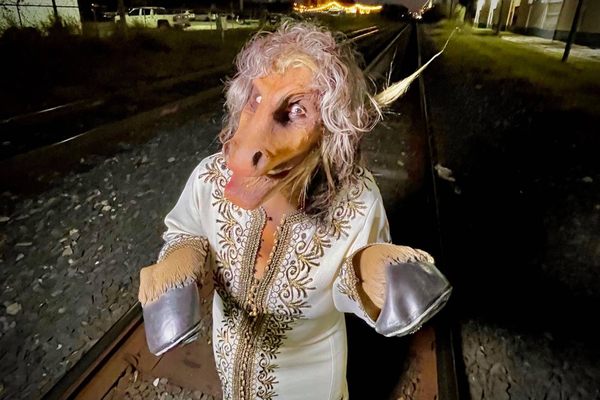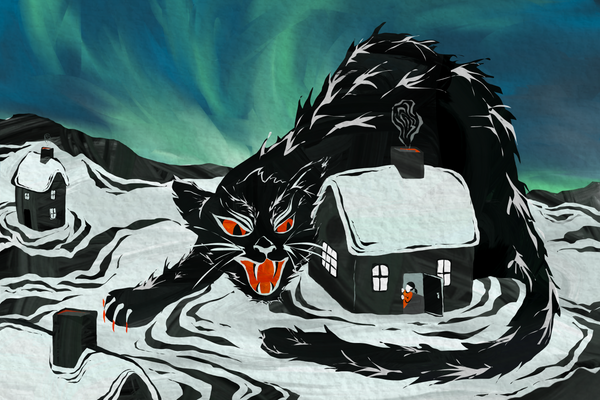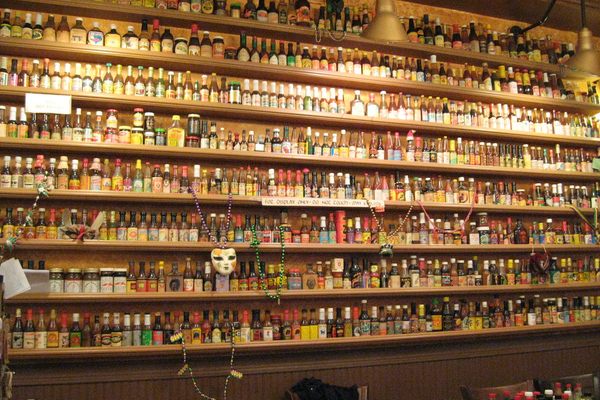Why Halloween’s ‘Poison Candy’ Myth Endures
Even though we know better.
In the fall of 1982, an unfounded fear haunted almost every house in Chicago. As area children prepared to “trick” their neighbors with their impressions of werewolves, vampires, and zombies, their parents were much more terrified of the “treats” their kids were eager to devour.
Candy was a potential murder weapon. Apples might contain carefully concealed razor blades. Twizzlers might be laced with rat or ant poison. Mayor of Chicago Jane Byrne urged extreme caution and vigilance on Halloween, adding that if she had children, she would not allow them to accept any food items.
As the fear crept across the nation, towns nowhere near Chicago began to sound the alarm. In Trenton, governor of New Jersey Thomas Kean signed a bill imposing a mandatory six-month jail sentence on anyone convicted of handing out contaminated Halloween candy. In Vineland, a southern New Jersey city, Mayor Patrick Fiorilli imposed an outright ban on trick-or-treating, noting “what an opportunity this was for some nut to do something.” Local hospitals offered to X-ray children’s Halloween candy hauls.
However, according to sociologist Joel Best, this ghastly threat was about as real as the candy-seeking, child-sized ghosts and witches roaming around with pillow cases.
“All I can say is I don’t know of a single case of a child killed by a Halloween poisoner,” says Best. “I’ve seen five news stories that attributed deaths to Halloween poisoning. In one case, it was the child’s own father, and the other four were all retracted.”
Best would know. As the author of the 1990 book Threatened Children and the co-author of a study tracking all reports of contaminated Halloween candy since 1958, the University of Delaware sociology professor is arguably the nation’s foremost expert in “Halloween sadism.”

Halloween sadism is defined as the act of passing out poisoned treats to children during trick-or-treating. But even before the term was coined in 1974, parents already feared a mysterious, mentally unhinged candy killer for decades, despite a lack of supporting evidence.
For Best, who has updated his report every year since the 1980s, the month of September kicks off a sort of “interview season,” during which he inevitably fields calls from the press about the latest crop of claims.
“There’s always high anxiety in the years when something happens in September,” says Best. “Reports of poisoned candy increased after September 11. Whenever something unsettling happens shortly before Halloween, I get more calls that year.”
Indeed, something very unsettling had happened in Chicago in September 1982, but it had nothing at all to do with Halloween, candy, or trick-or-treating.
Late in September, seven apparently healthy Chicagoans had died suddenly and inexplicably. It would not be long before authorities identified a common factor—all of the victims had taken capsules of Extra-Strength Tylenol before their sudden deaths. Toxicology studies revealed that someone had opened the capsules and replaced their contents with fatal doses of cyanide. To this day, no one has been charged with the crime.
It was a very alarming occurrence to be sure, and the makers of Tylenol quickly took appropriate action. On October 5, 1982, Tylenol’s parent company Johnson & Johnson initiated an unprecedented mass recall of Extra-Strength Tylenol, more than 31 million bottles worth. New tamper-proof packaging was introduced. But much like the undead movie monster that keeps popping out of the grave for jump scares, the fear of tainted candy simply refused to die.

Best, who maintains that children are much more likely to be harmed on Halloween by cars than contaminated treats, has continued his never-ending task of quietly and efficiently unmasking the fraudulent claims that darken his door.
Of the approximately 200 reports of Halloween sadism he has evaluated, the vast majority fell apart upon closer scrutiny. Many of the needles in apples and poison-laced treats turned out to be hoaxes. In some cases, the children themselves perpetrated the hoax, perhaps to get attention.
“My favorite story of this kind was the one where a kid had taken a bite out of a candy bar and said to his parents, ‘I think there’s ant poison on this candy bar,’” says Best. “So the candy bar got analyzed, and sure enough, there was ant poison on it, but it was on the end of the candy bar the kid hadn’t taken a bite from.” The child later admitted to having put the poison on the candy bar himself.
In a similar case, a child claiming that he’d found a pin in his Tootsie Roll led his parents to accuse a neighbor of the deed. After 20 years of no doubt awkward neighborhood interactions, the child, by then an adult, confessed to planting the pin himself.
In the few tragic cases in which children died, the cause was invariably traced back to something other than a crazed neighborhood killer. When 8-year-old Timothy O’Bryan died after consuming poisoned Pixy Stix, the culprit was living right under the same roof: Timothy’s father, Ronald O’Bryan. The elder O’Bryan was intent on collecting his son’s life insurance money.
Of all the reports of a child being killed by Halloween sadism, not a single one has held up under inspection. Yet when October 31st rolls around, police stations, hospitals, and local news outlets continue to break out the perennial warnings about how to “protect children from poisoned candy.” Some police departments and hospitals lend further credibility to the myth by issuing “warning” press releases or offering to inspect candy.
So why does this fear continue to endure and flourish even in the absence of evidence to support it?
“This is, first and foremost, a worry about protecting children,” says Best, who categorizes Halloween sadism as a contemporary urban legend.
“When you think about it, children are the walking, talking future. So, when we’re anxious about our society’s future, we can express that by saying, ‘We’ve got to protect our children.’”
Best says the fear of poisoned or otherwise tainted Halloween candy has come to serve as a proxy for very legitimate societal anxieties. In a modern world rife with looming threats—overpopulation, climate change, economic collapse, global pandemic, political instability, technology run amok—it is useful to be able to funnel these fears into a less unwieldy receptacle. By offloading anxieties onto a manageable yearly event, people can fend off a feeling of helplessness, says Best.
“If you think about it, Halloween sadism is the best thing in the world to worry about,” he says. “There is somebody in your neighborhood who is so crazy, they will poison little children at random. And yet, they’re so tightly wrapped, they’ll only do it one night of the year,” he says. “So on November 1, you wake up, look around the breakfast table and count noses. If everyone’s still there, you can say, ‘OK, we don’t have to worry about this for another 364 days.’”
Various forms of this legend have existed long before the 1982 Tylenol scare. While Best has been tracking the phenomenon since 1958, folklorist Elizabeth Tucker noted similar themes in other myths, like Blood Libel, a myth dripping in antisemitism that blamed Jewish people for kidnapping Christian children to use in illicit rituals.
“There have been many versions of these legends about our most vulnerable and precious family members being affected by dangerous people, strangers, those who are different from us,” says Tucker, a professor at Binghamton University who studies folklore surrounding children and the supernatural.

Through the decades, Halloween sadism has adapted to changing fears. Anxieties about the 1960s and 1970s drug culture translated into a terror of crazed hippies dosing candy with LSD—a fear that would be revived with the first legalized cannabis in 2014.
The fear of drug-laced Halloween candy was further intensified in 2022 with news reports of “rainbow fentanyl”—a form of the highly addictive narcotic produced in bright colors, allegedly to appeal to children.
“The press really caught onto this,” says Best. “I’m curious about how it will go this year, because as you might imagine, the total number of cases of fentanyl in Halloween candy in 2022 in the United States was zero.”
The media often does little to dispel fears of Halloween sadism. As frightening as Chicago’s 1982 Tylenol poisonings were, there was reason for parents to feel reassured. Johnson & Johnson’s swift and thorough handling of the emergency was hailed as “a model for effective corporate crisis management” by TIME. There was also the fact that these poisonings had nothing whatsoever to do with Halloween candy.
Nonetheless, respected outlets like The New York Times, as well as trusted advice columnists Dear Abby and Ann Landers, all weighed in with alarmist articles warning parents of Halloween night dangers. Both then and now, the validation of this fear by the press, and especially by authority figures like the police, likely reinforces and strengthens the legend, Tucker says.

“Police are authority figures—they’re people who keep law and order. People we trust,” she says. “We look to them to tell us if there’s a problem. So, if the police are actively checking children’s candy and encouraging children to come in, this is a huge reason for the legend to keep going.”
The Greene County Sheriff’s Department in Xenia, Ohio, is one police department that continues to offer annual inspection of children’s Halloween candy.
“We do it as a public service, for those who do have a fear or concern,” says Sergeant Chris Moore, who is involved in candy checking. “This allows us to give parents comfort that the candy has been scanned for foreign objects. We don’t scan for any type of chemical alterations.”
Moore, who was not aware “at all” that the fear of poisoned Halloween candy is widely considered to be an urban legend, says his department views the inspections as a proactive measure.
“We do this for the same reason our patrol units are out,”says Moore. “They don’t have to be dispatched to a crime to do their job. We know there are people in this world who do nefarious things, and therefore we want to be on the preventative side of that.”
As the days grow shorter and the leaves begin to fall, Best is preparing to once again be “haunted” by calls from the media. As he waits for the inquiries to come in, he amuses himself with speculation about what form the panic will take.
“Every year, around this time, it starts,” says Best. “I’m waiting to see if we’ll remember rainbow fentanyl this year, or if it will be like the Tylenol poisonings [year]—that was just a boom year.”

Tucker, meanwhile, recently visited her local Spirit Halloween store, browsing its wares with a folklorist’s eye. What she observed was a veritable roundup of current societal fears. She noted a whole section of Venice Plague Masks, the recent popularity of which is likely linked to the COVID-19 pandemic. But most memorably, Tucker saw shirts for sale with a warning message in creepy, blood-red letters: “Always Check Your Candy.”
The shirt refers to a 2007 movie titled Trick R Treat, which features a storyline about—you guessed it—a crazed candy poisoner.
“Although it was pretty bad as films go, its first scene definitely applies the idea of strangers poisoning candy,” says Tucker. “The principal of a local school feeds poisoned candy to certain trick-or-treaters, then kills them and buries them in the backyard.”
“It’s interesting to see that this fear of poisoned candy has become commodified in expensive Halloween outfits,” she says. “People find ways to build upon belief and fear, and they turn it into a product that people will just line up to buy.” (Or a B-list film horror film people will purchase tickets to see.)
Tucker, who was looking for a Halloween costume to wear to her folklore class, ended up joining the line.
“I bought the shirt anyway,” she says with a laugh.”I just really wanted it.”
Gastro Obscura covers the world’s most wondrous food and drink.
Sign up for our email, delivered twice a week.























Follow us on Twitter to get the latest on the world's hidden wonders.
Like us on Facebook to get the latest on the world's hidden wonders.
Follow us on Twitter Like us on Facebook